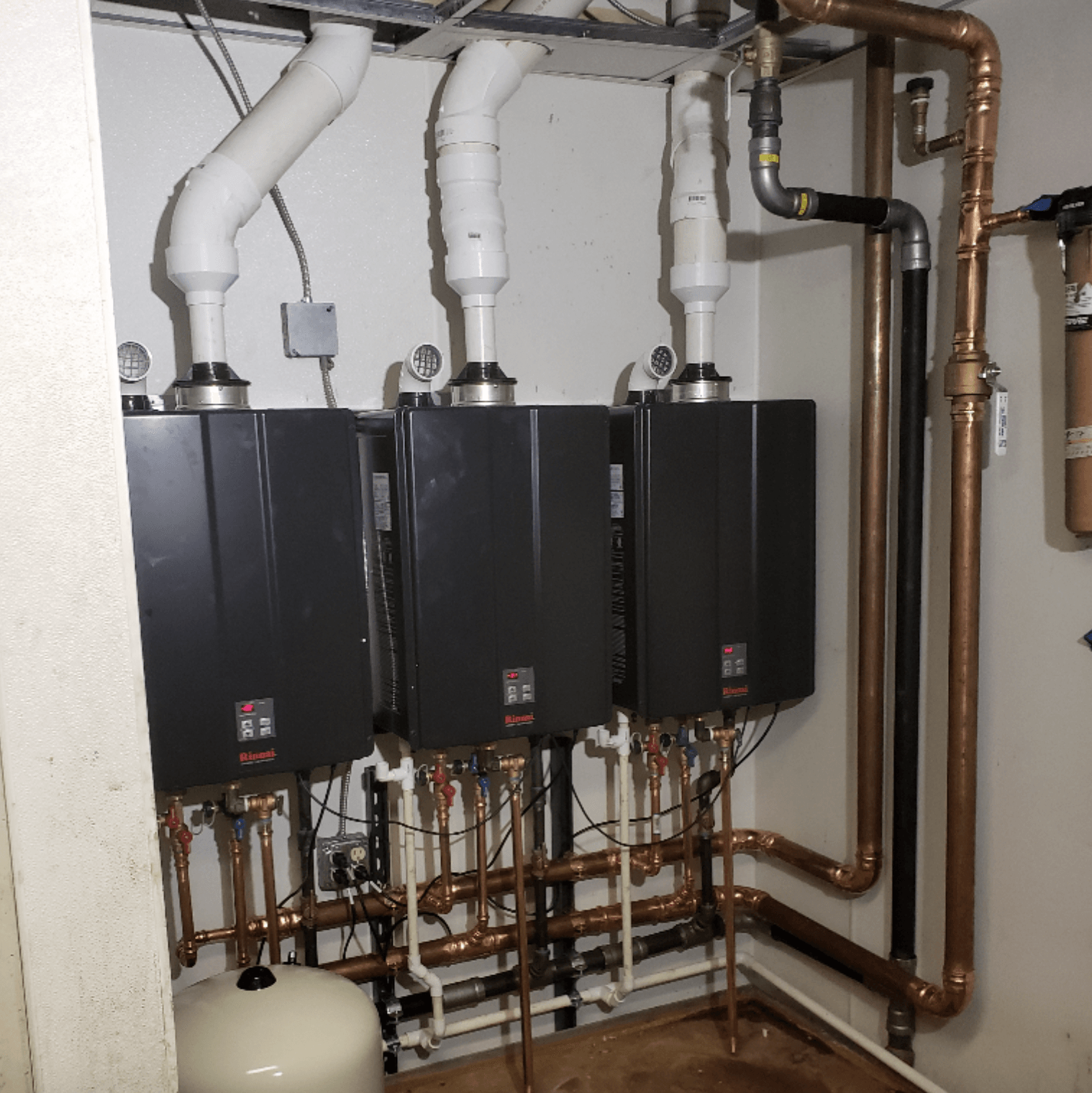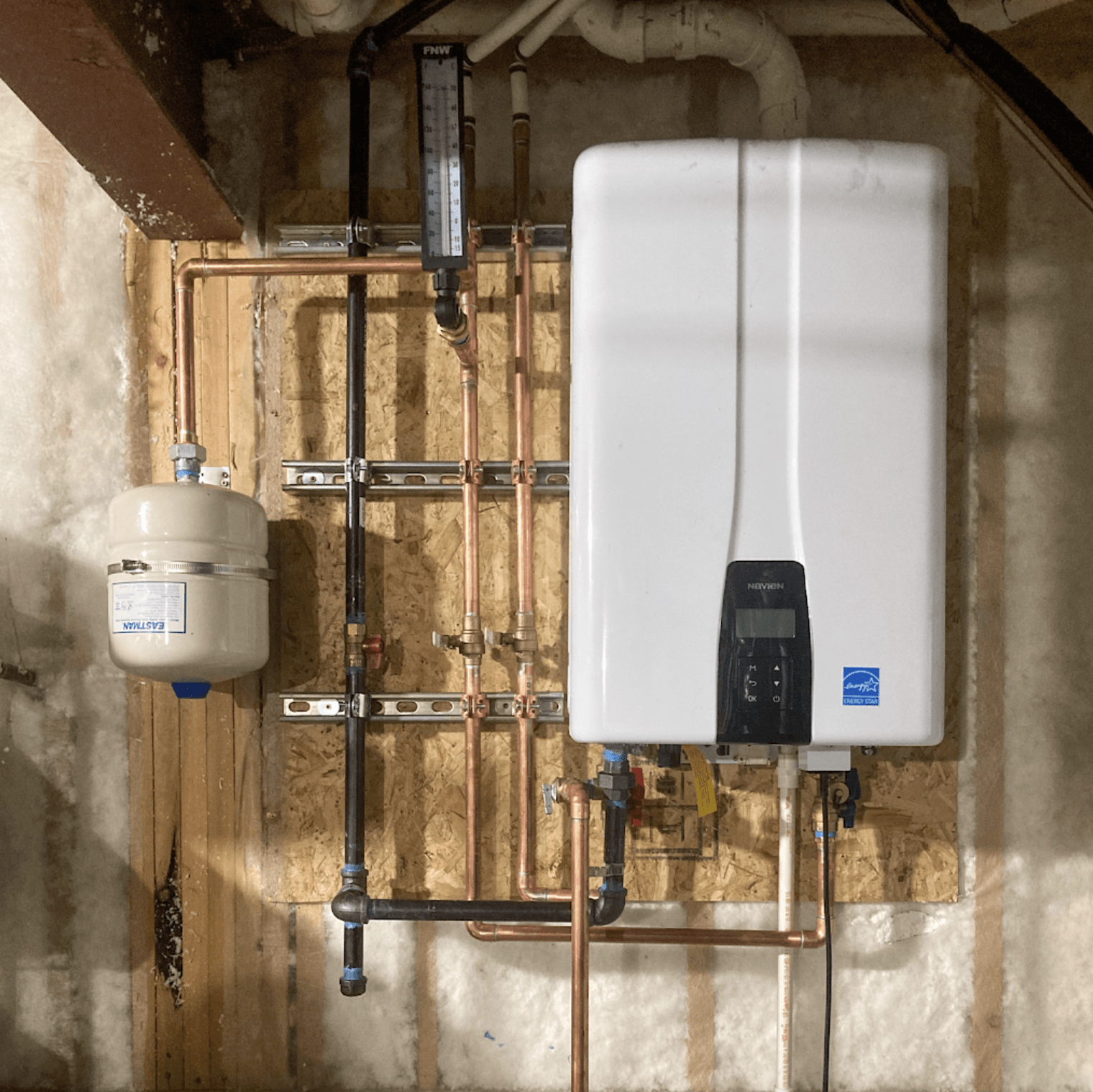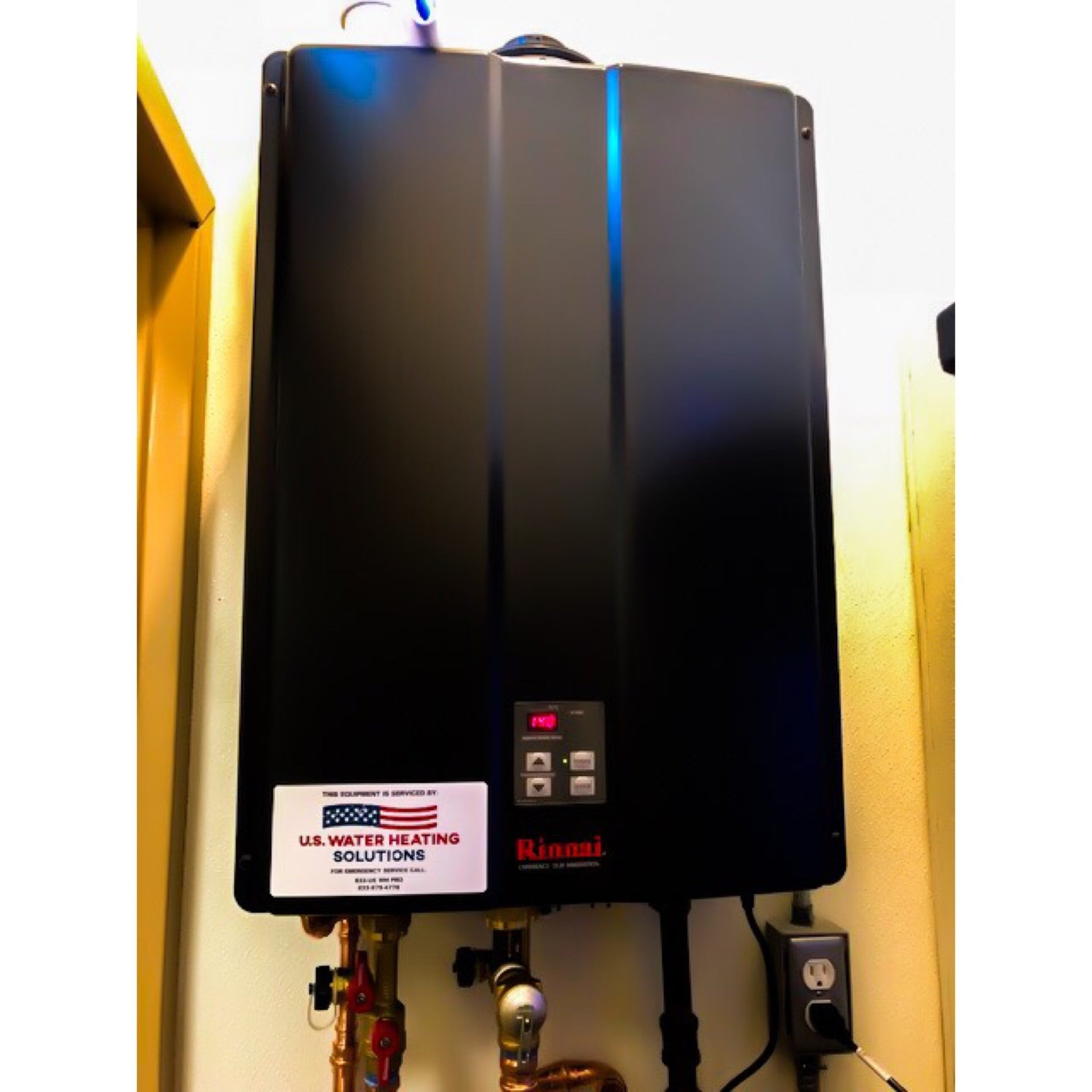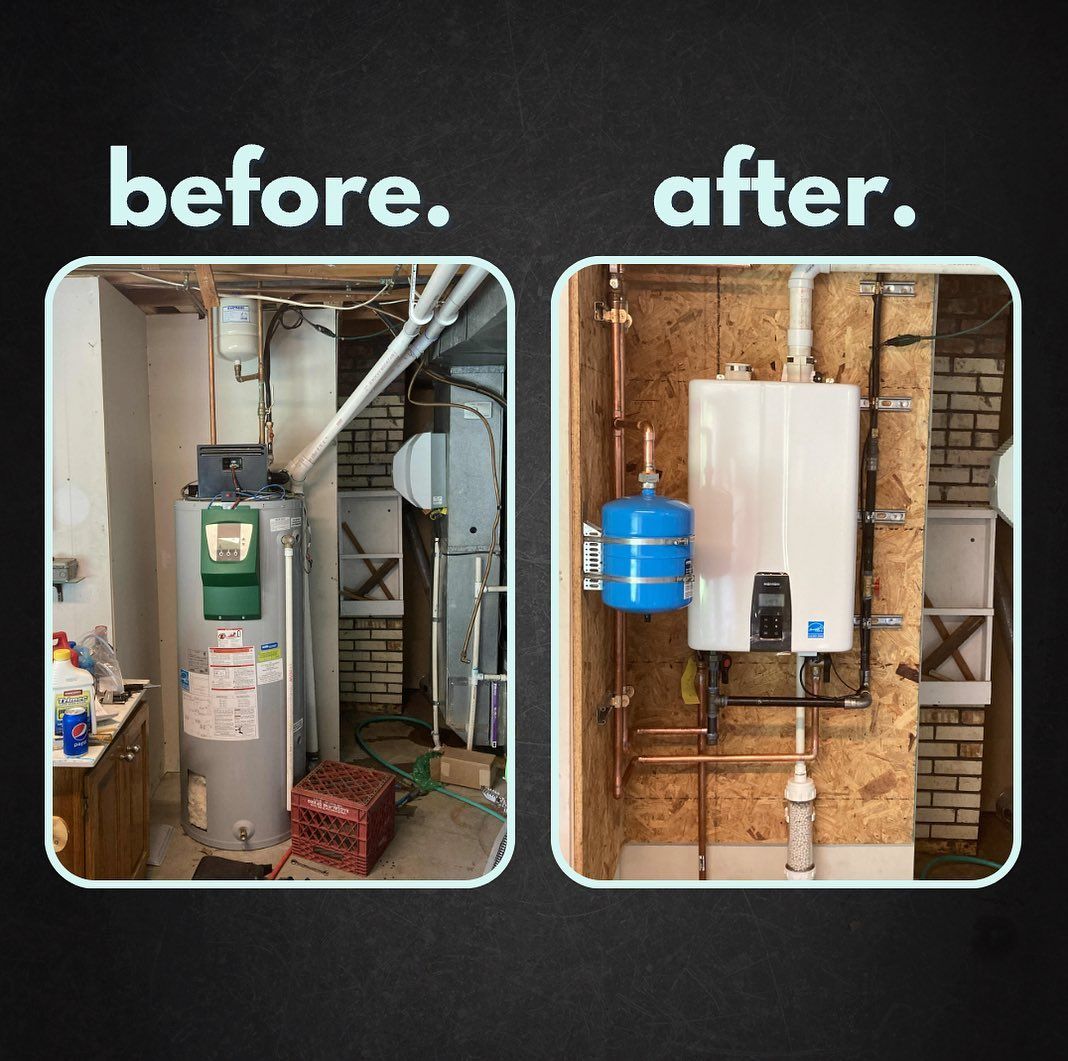Tankless Water Heater Upgrades + Installations
Ready to make the switch from tank type to tankless? Need to replace an existing tankless water heater?
Upgrade to a Tankless Water Heater
Tankless Water Heater Benefits
Most homes still use a traditional water heater. While inexpensive, tank type water heaters take up a lot of room, and homeowners must wait for water to get hot after they use the warm water in the tank. When your traditional water heater breaks down, it may be time to consider the future in water heating technology with a tankless water heater. Some of the benefits of tankless water heaters include:
On Demand Hot Water
Unlike tank type water heaters that store the heated water in the tank, tankless water heaters produce hot water on demand*. The unit heats the water immediately before sending the water to the appropriate fixture. No waiting for the tank to fill up with warm water after its all used up!
*NOTE: On demand production is based on the flow rate
Increased Energy Efficiency
Tankless models offer greater efficiency than standard water heaters since they don't experience standby heat loss. Water stored in a tank will lose heat over time, even if the tank has quality insulation. The unit must work harder to keep the water warm. You don't have the same concern with tankless water heaters, meaning lower energy costs and a lower utility bill.
Compact Size
Conventional water heaters require sufficient space, including valuable floor space. They also weigh more due to storing water inside the tank; this can cause additional difficulty during replacement, as water heaters that cannot easily be drained are much heavier. Tankless models take up much less space. In most cases, you will mount the unit on the wall, leaving floor space for other uses. Since tankless water heaters do not store water, they also tend to weigh significantly less (an average of 50-70 lbs).
Longer Lasting
On average, traditional water heaters last about 8 years. However, when properly maintained, tankless water heaters last 12+ years. You don't have to buy a new unit as quickly, saving you money in the long run.
Types of Tankless Water Heaters
Once you decide to go tankless, you will have some decisions to make, as there are several different types of tankless water heaters available, each with a variety of brands and models to choose from:
Compact Size
Types of Tankless Water Heaters
Once you decide to go tankless, you still have some decisions to make, as there are numerous types of tankless models available:
- Tankless electric water heater
- Tankless condensing gas water heater
- Tankless non-condensing gas water heater
When it comes to efficiency, you want to opt for a gas tankless water heater or an electric tankless water heater.
Things to Consider About Tankless Upgrades
While there are numerous benefits to upgrading to a tankless model, there are also two important things to consider about the upgrade:
- Higher initial investment
- Upgrading a to a gas tankless water heater often requires upgrades to your home's infrastructure to properly ventilate the unit, as their venting requirements differ from traditional tank type units in diameter and length. Similarly, electric tankless water heaters may require an upgrade to the electrical system and breaker panel. At U.S. Water Heating Solutions, our technicians are factory trained and certified to properly install tankless upgrades in alignment with manufacturer's specifications.
- Preventative Maintenance
- After your initial investment, tankless water heaters require an annual (or more frequent) flush with a manufacturer approved solution to remove sediment build-up. Flushing a tankless water heater ensures the unit runs efficiently and can help to ensure your heat exchanger warranty remains valid. During this time, our service technicians will also check and clean the parts that are most crucial to your unit's operation (e.g., flame rod, ignitor, inlet water filter, etc.). It is important to note that every service company's or plumbing company's preventative maintenance stipulations may differ. Thus, we recommend asking what their preventative maintenance offerings include to ensure you receive the greatest value for your investment.
Sizing Tankless Water Heaters
Tankless water heater manufacturers measure hot water production in gallons per minute (GPM). The water will never go cold, no matter how long you leave it running, unlike tank type water heaters. However, the hot water gets divided by each open fixture in the house. If three people run a 2.0 GPM shower head, the tankless model must have at least a 6 GPM rating to support the demand. Otherwise, the home may experience what's known as a cold water sandwich, meaning cold water may get hot momentarily, but it will return to its original cold temperature shortly.
It's important to note that while a unit may advertise as 6 or 7 GPM, that's not necessarily what you'll get. The actual GPM will depend on the temperature rise. The temperature rise indicates how much of a difference the incoming water is compared to the desired temperature. A larger temperature rise means a lower GPM.
Contact U.S. Water Heating Solutions or call 833-879-4776 to learn more about tankless model upgrades.
Don't forget to sign up for your regular preventative maintenance program at the time of installation to ensure that your heat exchanger stays in good shape and to ensure that you have appropriate documentation in the event that your tankless water heater requires heat exchanger replacement!
Commercial Tankless Water Heater Installation
Rinnai and Inetllihot both offer commercial tankless water heaters
Depending on the amount of hot water required and the client's budget, and installation space, they may benefit from installing a rack system with multiple residential units
Behind the scenes: Navien NPE 240-A2 Installation for commercial client
Tankless Install Gallery
Tankless Water Heater Installation Service Area
Enter the location details for the home or business where you would like to have a tankless water heater installed to see if we service your area! After providing your state and zip code, you can instantly see if we service your area and submit a service request! If we do not offer tankless installation in your area, our team members may be able to provide you with an extended travel rate or an alternative service provider. We typically respond to all online hot water repair inquiries within 24 hours or less (please allow extra time during weekends and holidays).








